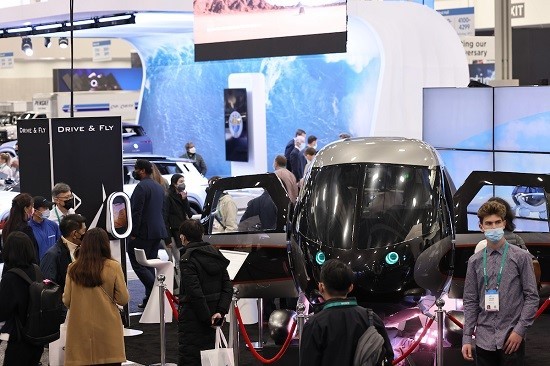The Consumer Electronics Show (CES), one of the biggest and
most important annual technology exhibitions, in Las Vegas, was held between
January 5 and 7, one day earlier than initially planned. Organizers explained
that the early conclusion was a sanitary precaution, and that several of the
major exhibitors, among them Microsoft, were reluctant to stay any longer.
اضافة اعلان
 (Photo: CES twitter account)
(Photo: CES twitter account)
It is very interesting, to say the least, to watch the
tremendous change in turnout at big tech shows, and even more so to try to
understand the reasons behind their regression.
Las Vegas’ CES, Hannover’s (Germany) CeBIT, Dubai’s Gitex
and Barcelona’s (Spain) MWC (the Mobile World Congress) are the main mega tech
events that used to attract hundreds of thousands of visitors at each edition.
Things have changed over the last years.
The CES this year registered 40,000 visitors, compared to
180,000 three years ago. In Hannover, attendance in 2008 was 500,000; it
dropped to 120,000 in 2018. The attendance curve of the other shows follows,
more or less, the same pattern.
If this year’s CES low in-person turnout can be explained by
the COVID situation, the pre-2020 general trend numbers above surely have
nothing to do with the prevailing health restrictions and fears. The
noticeable, regular drop in the yearly number of visitors started well before
2020, mainly because of what fast Internet browsing had brought, including the
sophisticated, lively digital audiovisual experience of the new high-tech
products that, in most cases, nicely replaced the in-person experience that was
thought to be irreplaceable.
Considering the time, the effort and the expenditure it
takes to go to Las Vegas, Hannover, Dubai or Barcelona – unless of course you
happen to live in or nearby these cities – discovering the new high-tech
goodies digitally, from the comfort of your couch, became a more than an
acceptable compromise – one that comes with clear benefits.
Thinking smartly, the CES organizers started to design and
to implement a digital version of their show, in addition to the physical,
in-person event. Last year it was the only way to enjoy the show, and this way
it just ran in parallel to the one at the venue in Las Vegas, in smooth
synchronization with it.
There are some lessons to be learnt from the above.
The first is that despite the undeniable, strong attraction
that high-tech products of all kinds have for the population, from home
consumers to professionals, the unsurpassed convenience of digital, on-line
visits has and will continue to reduce the number of in-person attendance. This
trend is irreversible.
Some will argue that it is not the same experience. Of
course, nothing beats being there “in the flesh”, watching a live demo in
full-size, interacting with the products, touching them, discussing and
chatting with the exhibitors, not forgetting collecting give-away gifts and
leaflets, sharing with the participants a cup of coffee and exchanging colored
business cards with new contacts. It is not and will never be the same
experience, and this is why there will always be a percentage of the population
that will prefer – and can afford – to be there in person.
The second lesson is that despite any planning and
preparation, these big events are subject to the unexpected, to the
unpredictable, that can always happen and will interfere and affect their success,
or at least the size of the turnout.
For the past two years, this beyond-control element has been
the pandemic.
The last lesson is that a combination of virtual and
in-person seems to be the ideal way to get things done these days. This kind of
hybrid approach does not only apply to giant technology shows, but also to a
number of procedures and activities, like dealing with your bank, doing
government formalities, shopping or attending school.
It does not have to be exclusively online or entirely in
person. A smart and balanced combination, taking any prevailing limitations and
restrictions into consideration, however permanent or temporary, is the way to
do it now.
Adopting this approach is allowing big tech shows to
survive, to please, and to entertain high-tech aficionados.
Jean-Claude Elias is a computer engineer and a classically
trained pianist and guitarist. He has been regularly writing IT articles,
reviewing music albums, and covering concerts for more than 30 years.
Read more Opinion and Analysis







